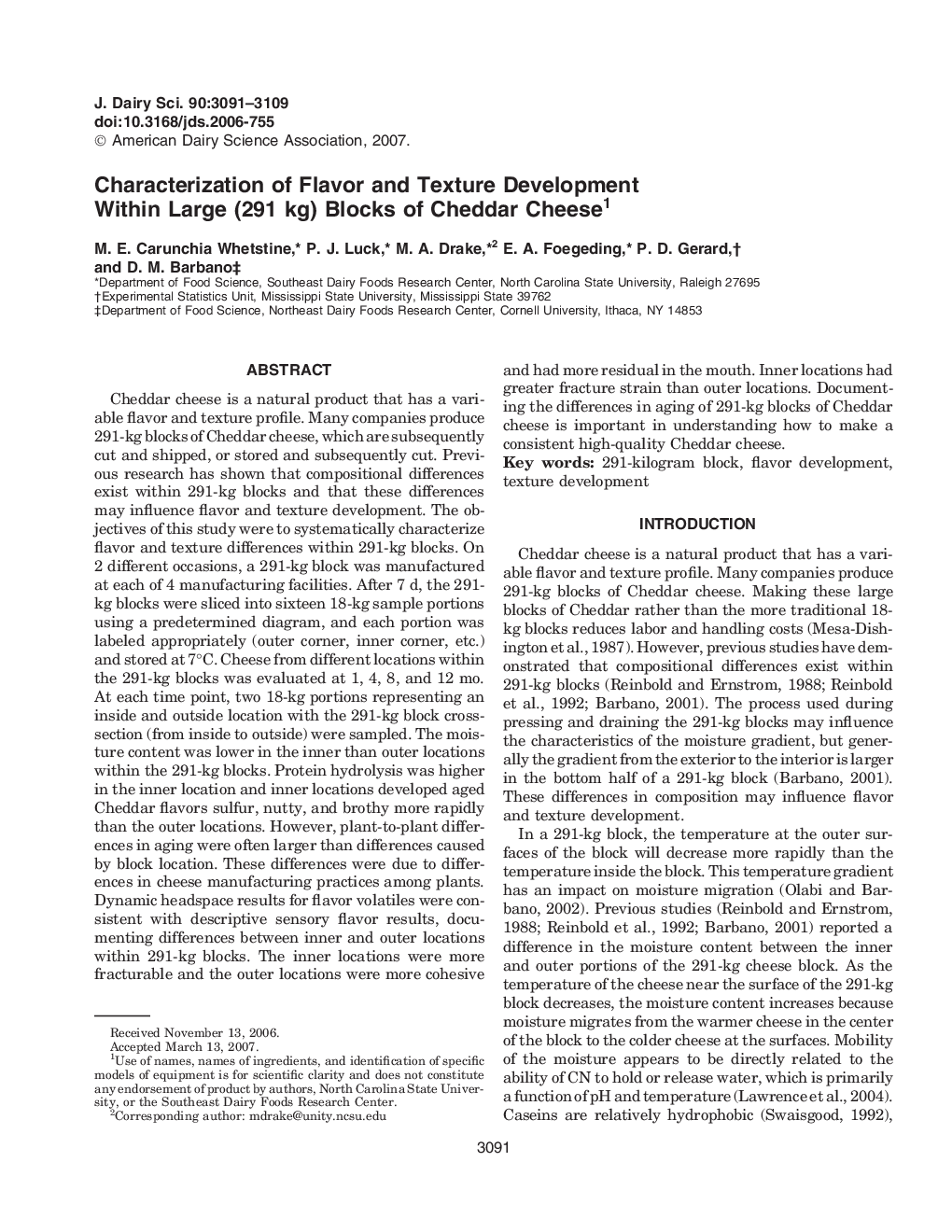| Article ID | Journal | Published Year | Pages | File Type |
|---|---|---|---|---|
| 2440771 | Journal of Dairy Science | 2007 | 19 Pages |
Abstract
Cheddar cheese is a natural product that has a variable flavor and texture profile. Many companies produce 291-kg blocks of Cheddar cheese, which are subsequently cut and shipped, or stored and subsequently cut. Previous research has shown that compositional differences exist within 291-kg blocks and that these differences may influence flavor and texture development. The objectives of this study were to systematically characterize flavor and texture differences within 291-kg blocks. On 2 different occasions, a 291-kg block was manufactured at each of 4 manufacturing facilities. After 7 d, the 291-kg blocks were sliced into sixteen 18-kg sample portions using a predetermined diagram, and each portion was labeled appropriately (outer corner, inner corner, etc.) and stored at 7°C. Cheese from different locations within the 291-kg blocks was evaluated at 1, 4, 8, and 12 mo. At each time point, two 18-kg portions representing an inside and outside location with the 291-kg block cross-section (from inside to outside) were sampled. The moisture content was lower in the inner than outer locations within the 291-kg blocks. Protein hydrolysis was higher in the inner location and inner locations developed aged Cheddar flavors sulfur, nutty, and brothy more rapidly than the outer locations. However, plant-to-plant differences in aging were often larger than differences caused by block location. These differences were due to differences in cheese manufacturing practices among plants. Dynamic headspace results for flavor volatiles were consistent with descriptive sensory flavor results, documenting differences between inner and outer locations within 291-kg blocks. The inner locations were more fracturable and the outer locations were more cohesive and had more residual in the mouth. Inner locations had greater fracture strain than outer locations. Documenting the differences in aging of 291-kg blocks of Cheddar cheese is important in understanding how to make a consistent high-quality Cheddar cheese.
Related Topics
Life Sciences
Agricultural and Biological Sciences
Animal Science and Zoology
Authors
M.E. Carunchia Whetstine, P.J. Luck, M.A. Drake, E.A. Foegeding, P.D. Gerard, D.M. Barbano,
